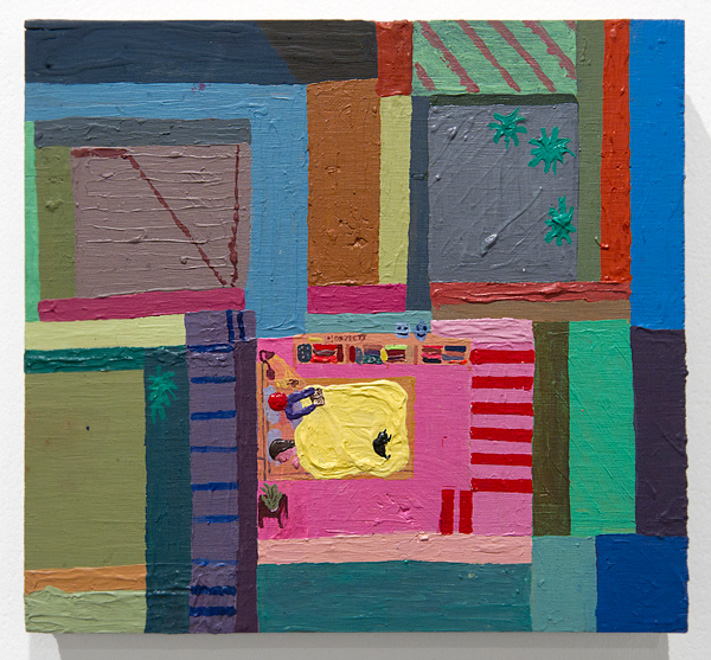
Turning human behaviors into equations has been an endless pursuit for neuroscientists, psychologists, advertisers and many others. Chris Johanson presents a hypnotic rendition of these patterns of human activity in his solo exhibition titled “Equations” at the Altman Siegel gallery, an independent art gallery on Geary Street in San Francisco (Nov. 25 to Jan. 15).
A native Californian, Johanson grew up in the Mission in the late ’80s. Initially scribbling cartoons onto bathroom walls, he became a member of the local art community incorporating urban themes into his work. His choice mediums, recycled materials and graffiti, are a nod to his suburban childhood. A modern-day Monte Cristo, Johanson did not gain real notice at home until he landed a couple of international-level exhibits including the New York Whitney Biennial in 2002.
Johanson has a unique, meditative way of creating art that has caught the attention of international art purveyors. He spends hours brooding in front of a blank cut-out of wood, feeling its surface and directing his personal thoughts and emotions. Once his thoughts have sufficiently shaped his subject matter — which sometimes requires him to sleep next to his canvas as additional perspectives take root from his dreams — he makes his first decided marks. The careful methodology that Johanson has tended over the years gives his works a freshness like no other.
The “Equations” exhibit is comprised of new paintings on recycled paper and posters. Johanson makes acute observations about people he sees in the streets and recreates them with vibrant pastel colors. In some of the paintings, he uses different shades of colors to represent various climes and the topology of LA’s rolling hills. The topological lumps are raised with several layers of paint topped onto extra wood shavings. In five of his landscapes, the level planes change from dark earthy greens to bright pastel pink suggesting that the whole city is tripping on pills.
“Equations” rings true to its mathematical name. Here, we observe children playing near sandcastles made of sands extracted from actual sandstone buildings. Construction workers, mariachi men, and street vendors laying out their goods are abundant. Immigrant faces are all blended together and the same. An amorphous, supernatural being floats through the creases along the concrete road in “The Big Picture Escapes Me,” where cars, yogis and yoginis are parked alongside each other on the road. The yin-yang symbol morphs into an emblem of a hand with a hole. All this symbolism illuminates the gentrification of the neighborhood similar to the gentrification of the Mission District, Johanson’s hometown, where native residents are harshly evicted and supplanted by the wealthier, younger tech generation.
Johanson shows us all that it is all more than skin deep. Why do people who live in this type of milieu act this way? In trying to elucidate the “equations” involved in LA human behavior, he proves, through its futility, that there is no straightforward answer.
Contact Jennifer Adams at adamsjen ‘at’ stanford.edu.
